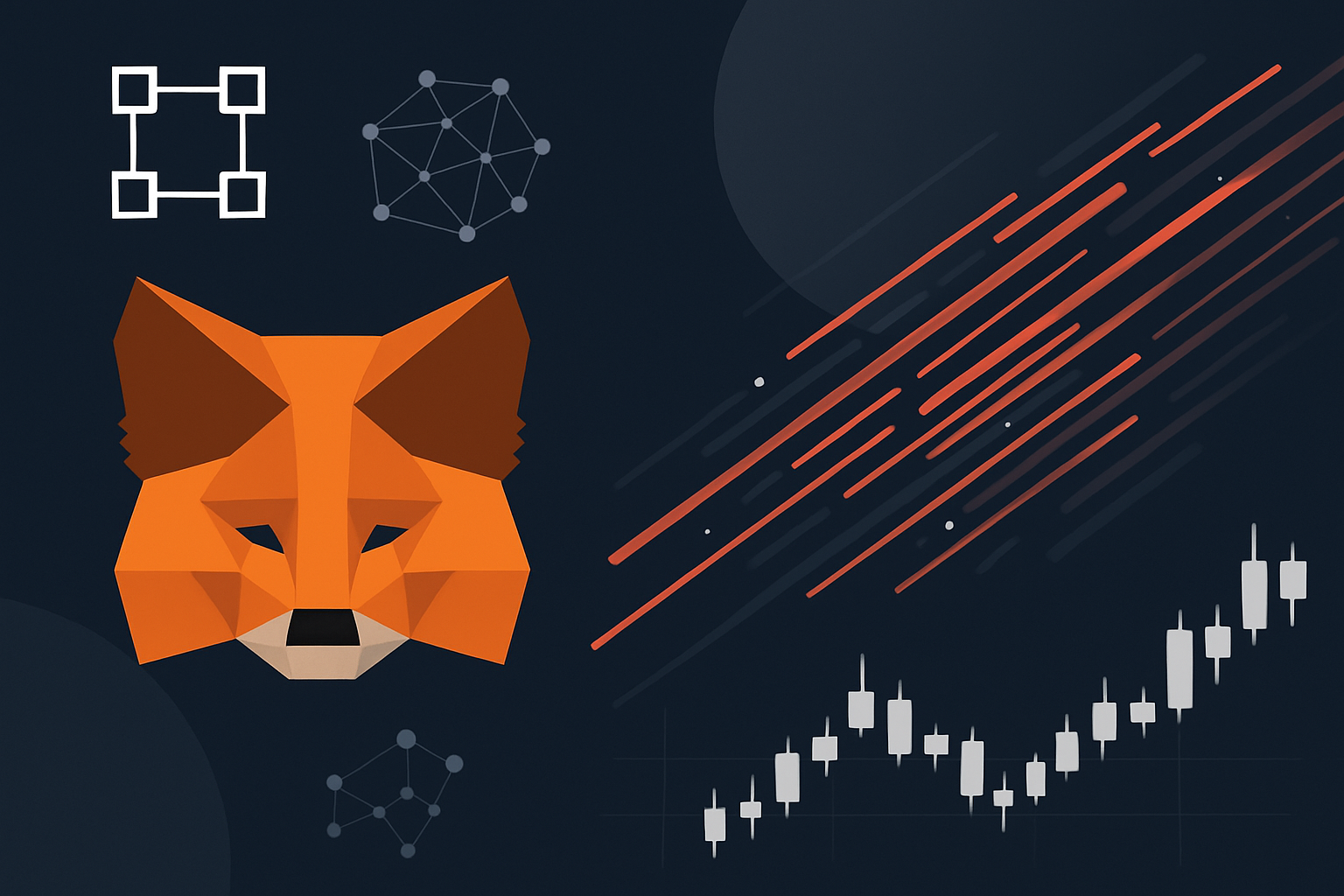
Perpetual decentralized exchanges (perp DEXs) are rapidly closing the gap with centralized exchanges (CEXs), not only in terms of technology but also in user experience, execution speed, and market depth. As of October 31,2025, the Solana ecosystem is at the forefront of this evolution, with platforms like Drake Exchange and BulkTrade demonstrating that high-performance DeFi trading is no longer a distant promise but an on-chain reality. With Binance-Peg SOL (SOL) currently priced at $185.26, the competitive landscape for perpetual trading is more dynamic than ever.
Why Are Perpetual DEXs Gaining Ground?
The surge in DEX adoption over 2024 is driven by a confluence of factors that have fundamentally shifted trader expectations:
- Technological Advancements: The integration of AI-powered automated market makers (AMMs), cross-chain interoperability, and ultra-fast execution layers has dramatically improved performance. Platforms now routinely deliver sub-20ms latency on-chain – a feat once thought exclusive to CEXs.
- Self-Custody and Transparency: Traders increasingly value direct asset control and real-time auditability. DEXs eliminate counterparty risk and opaque order books, aligning with the core ethos of decentralization.
- Competitive Fees: With volume-weighted average spot fees at just 12 basis points compared to CEXs’ 15 basis points, cost-sensitive traders are migrating to DEXs without sacrificing execution quality.
This shift is quantifiable: perpetual DEX market share has soared from 3.5% to 16.7% in just one year, while total perp DEX volume reached $52.4 billion, up nearly 20% in the past day alone. Solana-native solutions are leading this charge by leveraging high throughput and low transaction costs.
Drake Exchange: Building a CEX Experience On-Chain
Drake Exchange has emerged as one of the most ambitious projects aiming to replicate – and even surpass – the centralized trading experience within a decentralized framework. Its architecture focuses on three pillars: speed, security, and user-centric design.
- Mainnet Launch and User Growth: Since its mainnet debut, Drake has attracted both retail traders seeking transparency and institutions demanding reliability. The platform’s approach emphasizes minimal slippage even during periods of high volatility.
- CEX-Like Features: Advanced order types (such as stop-loss/take-profit), deep liquidity pools, and a robust risk engine allow for sophisticated strategies previously unavailable on most DEXs.
- Sustainable Incentives: Unlike older models reliant on unsustainable token emissions, Drake prioritizes organic liquidity growth through competitive fee rebates and transparent reward structures.
The result? Traders are finding that their execution quality on Drake rivals – or even exceeds – what they’ve come to expect from leading CEX giants.
BulkTrade: Institutional-Grade Trading for All
If Drake is setting new standards for retail-focused perp trading on Solana, BulkTrade is charting its own course by targeting institutional-grade performance accessible to everyone. With $8 million raised in seed funding, BulkTrade’s mission centers around building an ultra-low latency execution layer designed specifically for perpetual contracts.
- Performance Benchmarks: BulkTrade promises sub-20ms trade execution times thanks to its custom-built infrastructure atop Solana’s high-speed network. This places it squarely in competition with legacy finance platforms and elite crypto CEXs alike.
- User Experience Innovations: The platform integrates intuitive dashboards with granular analytics tools so traders can monitor margin health, funding rates, and open interest in real time – all without relinquishing custody of their assets.
- Ecosystem Integration: BulkTrade’s open API architecture supports seamless connections with third-party bots and portfolio management tools, making it attractive for power users seeking automation or advanced risk controls.
This approach resonates strongly with both professional quant desks and advanced DeFi users eager for transparency without compromising on performance or control.
Solana (SOL) Price Prediction 2026-2031
Professional Analyst Projections Based on DEX Growth, Market Trends, and Technological Advancements
| Year | Minimum Price (Bearish) | Average Price (Base Case) | Maximum Price (Bullish) | Annual % Change (Avg.) | Key Market Scenario |
|---|---|---|---|---|---|
| 2026 | $165.00 | $220.00 | $295.00 | +18.8% | Continued DEX growth, moderate market expansion |
| 2027 | $185.00 | $260.00 | $355.00 | +18.2% | Further DEX maturity, institutional adoption increases |
| 2028 | $210.00 | $305.00 | $420.00 | +17.3% | Solana DEXs rival CEXs in volume; regulatory clarity improves |
| 2029 | $235.00 | $355.00 | $490.00 | +16.4% | Major DeFi integrations, Layer-2 solutions boost scalability |
| 2030 | $260.00 | $410.00 | $570.00 | +15.5% | Wider mainstream adoption, global investment inflows |
| 2031 | $290.00 | $470.00 | $660.00 | +14.6% | Mature DeFi ecosystem; Solana a leading chain for perp DEXs |
Price Prediction Summary
Solana (SOL) is poised for steady long-term growth, supported by the rapid rise of decentralized perpetual exchanges (DEXs) on its network. As Solana-based DEXs close the performance gap with centralized exchanges, greater user adoption, technological innovation, and increased institutional participation are expected to drive SOL’s value higher. While volatility and market cycles remain, the outlook is positive, especially if Solana maintains its technological edge and regulatory headwinds are manageable.
Key Factors Affecting Solana Price
- Rapid growth and adoption of Solana-based perpetual DEXs (e.g., Drake Exchange, BulkTrade)
- Technological advancements (AI-driven AMMs, sub-20ms latency, cross-chain functionality)
- Shifting trader preference toward self-custody and on-chain transparency
- Competitive fee structures attracting both retail and institutional traders
- Potential for further regulatory clarity or global crypto adoption
- Competition from other high-performance blockchains and established CEXs
- General macroeconomic and crypto market conditions (liquidity, risk appetite, etc.)
Disclaimer: Cryptocurrency price predictions are speculative and based on current market analysis.
Actual prices may vary significantly due to market volatility, regulatory changes, and other factors.
Always do your own research before making investment decisions.
With the foundations set by Drake Exchange and BulkTrade, the Solana perp DEX landscape is evolving from experimental to truly competitive. A critical aspect of this transformation is measurable: execution speed, slippage, and liquidity depth are now on par with – or in some cases surpass – what traders experience on centralized platforms. In a market where Binance-Peg SOL (SOL) stands at $185.26, these advances are not just technical milestones but also key drivers of capital migration from CEXs to DEXs.
Performance Metrics: How Do Drake and BulkTrade Stack Up?
Quantitative comparisons matter when evaluating whether DEXs can genuinely challenge CEX dominance. Recent independent data shows that:
- Order Book Depth: Drake Exchange consistently posts tight spreads even during periods of volatility, reflecting robust liquidity provision mechanisms.
- Latency: BulkTrade’s execution times routinely clock in below 20 milliseconds, rivaling top-tier CEXs and ensuring minimal slippage for high-frequency strategies.
- Fee Structure: Both platforms keep trading fees highly competitive; with average spot fees at 12 basis points, active traders enjoy meaningful cost savings compared to most CEXs.
This convergence is not accidental. The integration of advanced risk engines, AI-powered AMMs, and open-access APIs means that sophisticated strategies – from grid trading to dynamic hedging – are now feasible without centralized gatekeepers. For those accustomed to high-touch CEX interfaces, these new DEX offerings feel refreshingly familiar yet fundamentally more transparent.

Security, Transparency, and Asset Control
The unique value proposition of perpetual DEXs remains their commitment to self-custody and transparency. On both Drake Exchange and BulkTrade, users retain full control over their assets at all times. Smart contract audits are standard practice; real-time proof-of-reserves dashboards provide reassurance that every position is fully collateralized on-chain.
This level of transparency isn’t just a philosophical win for decentralization advocates – it’s a practical advantage for risk management. Traders can independently verify solvency and exposure in real time, reducing reliance on opaque third parties or trust-based custodial models that have historically led to losses in the crypto space.
What’s Next for Solana Perpetual Trading?
The rapid growth trajectory of Solana perp DEXs signals further innovation ahead. As more institutional players test the waters with platforms like BulkTrade and as retail adoption accelerates on user-friendly venues such as Drake Exchange, we can expect:
- Continued Fee Compression: As competition heats up among leading DEXs, expect fees to drop further while rebates for makers increase.
- Deeper Liquidity Pools: Cross-chain bridges and liquidity incentives will draw even more capital into Solana-based perpetual markets.
- Enhanced Automation: Open APIs will enable a new wave of trading bots and portfolio management tools tailored specifically for decentralized perpetual contracts.
The bottom line? With SOL priced at $185.26, the ecosystem is primed for growth fueled by trader demand for speed, transparency, and self-sovereignty. While CEXs still hold an edge in absolute liquidity scale, the functional gap has narrowed dramatically – making Solana’s perp DEX scene one of the most exciting frontiers in DeFi today.
Which feature is most important to you when choosing a perpetual DEX?
With perpetual DEXs rapidly closing the gap with centralized exchanges, traders now have more choices than ever. From lightning-fast execution and lower fees to full asset control and on-chain transparency, which factor matters most to you when picking a platform?






